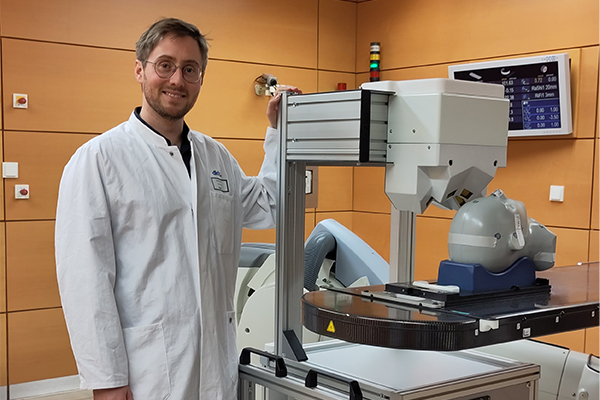Design report of an in-vivo monitoring system for ion-beam radiotherapy made of 28 Timepix3 detectors published in Scientific Reports

For the past four years, former OMA fellow Dr Laurent Kelleter has been working at the German Cancer Research Centre (DKFZ, Heidelberg, Germany) on a tracking system that is being used as an in-vivo monitoring system in ion-beam radiotherapy. The design and performance reports has just been published in Scientific Reports.
By exploiting the information carried by secondary radiation that is always produced during ion-beam therapy, the tracking system aims to improve the treatment accuracy. This is done by triggering a control CT of the patient if the observed difference between the secondary radiation fields of two treatment fractions cross a pre-defined threshold.
In the report, the system’s spatial resolution for individual particles is quantified as 4 mm along the beam axis. Moreover, it can easily resolve sub-millimetre beam range shifts that spread over a larger area.
For now, the tracking system is being used in the InViMo (in-vivo monitoring) clinical trial at the Heidelberg Ion Beam Therapy Centre (HIT, Heidelberg, Germany) for patients suffering from cancer near the skull base and treated with carbon-ion radiotherapy. Future plans are to expand the application to other tumour indications in the head as well as to other ion species (helium and oxygen).